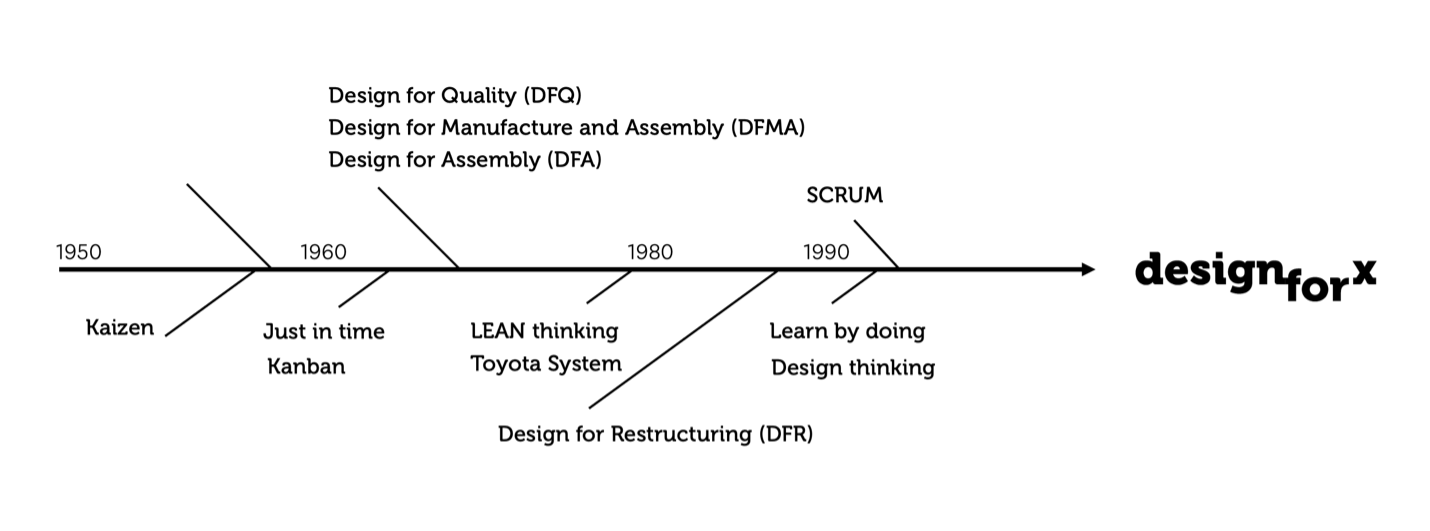
In the 70's the logic of just in time spreads with more force, which further drives the idea of
assembly linked to standardization and zero error, definitively transforming the industry and, consequently, the logic of production, logistics and marketing of products, reaching its apex in
the 90s and early 2000s.
More recently the concept of PDCA, or continuous improvement, which later evolves into the
idea of Always in Beta, has also been transported to the business world, since differentiation by
the speed of time to market has become more and more relevant with the emergence of tech
companies and start-ups. The models and reasoning that had been used to organize industries for
the administration and management of businesses and brands were transported, bringing
concepts such as Lean, Kaizen, and Kanban, among others, into organizations, resignified
through agile methods such as Learn by Doing, Lean Thinking, Scrum, Design Sprint, and
Design Thinking, which were also disseminated by business schools.
All of these variations have the same basis and the same origin, although they propose small
differences in approach that may be more interesting for one or the other strategy. This point
further reinforces the concept of Design for X, because at heart, many of these approaches, called
methodologies, are actually frameworks. Thus, Design for X is defined as a broad and flexible
methodology, which provides a greater focus on choosing the appropriate tools in the face of
project assumptions and objectives. If Design Thinking, or Design for Thinking, is a tool, Design
for X would be the toolbox.

